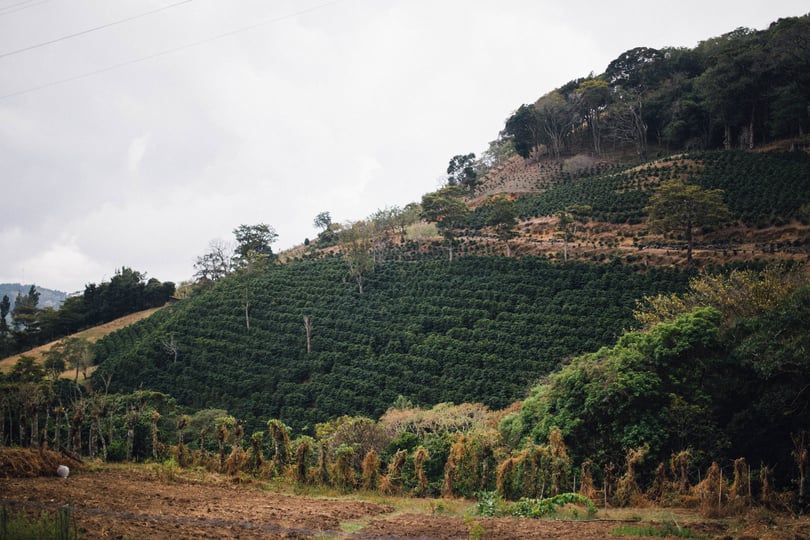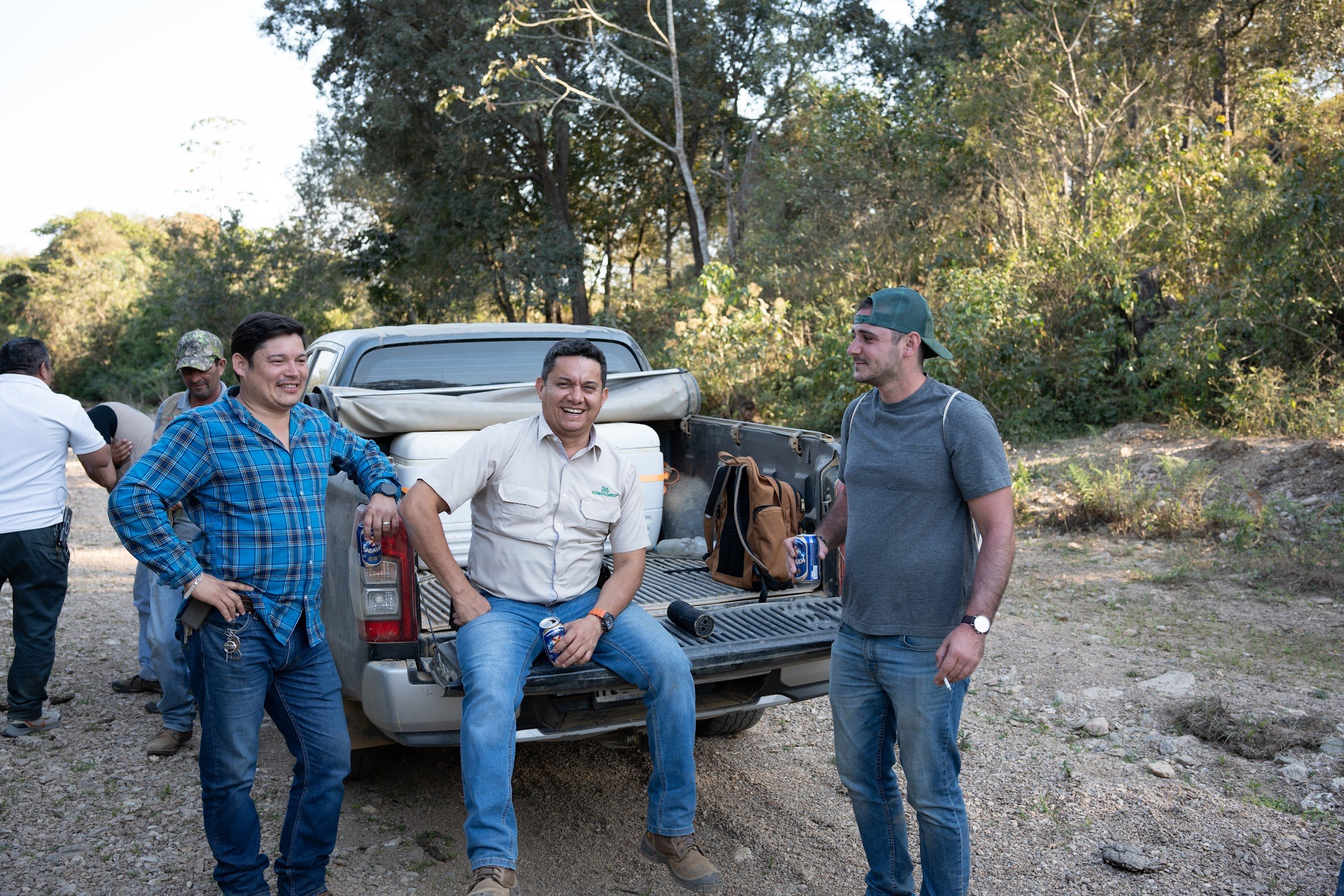At the Table
Understanding Single Origin Coffee
What is a single origin coffee?
In the broadest sense, single origin coffee defines coffee that comes from one single country. The term simply refers to a geographic location. To say "Colombian coffee" is like saying "American-grown wine." There's no mention of a specific producing area (like California) or cultivar (like Pinot Noir) or preparation method (like oak-barrel aging). It's simply a shorthand description defining where the berries were grown.
While "Colombian coffee" meets the general definition of single origin, describing it more specifically as coffee from a particular estate or region in Colombia provides a deeper understanding of the coffee's genesis, qualities, and—most importantly—reveals the identity of the producer.

A better way to define coffee origins
Understanding the importance of revealing a coffee's region-of-origin
Each growing region in producing countries can have vastly different terroirs, and different cultivars make significant changes to the flavor profile. What you're tasting in the cup is largely derived from the growing conditions in that specific region—its soil, climate, and altitude all contribute to unique flavor characteristics.
Take Guatemala, for example. The high mountainous region of Huehuetenango (pronounced "weh-weh-te-nango") produces beans with distinct acidic and fruity notes—not overly fermented, just slightly fruity. Meanwhile, the Coban region has a pronounced fruitiness largely resulting from its year-round wet climate, which some roasters might find too fruit-forward for their blends.
These regional differences are even more varied in Ethiopia, the birthplace of coffee. Here, not only do the regions make a huge difference, but so does the preparation method. In southern regions like Sidamo, "washed" (fermented) preparation produces coffees with distinct lavender notes and perfumy acidity. In other areas like Harrar, coffees are naturally processed (not washed or pulped), resulting in more "earthy" flavors with distinct "wild blueberry" notes rather than pronounced sweet lemony acidity.
Simply putting "Ethiopia" on a bag gives the consumer little idea of what they're about to experience!
What countries lend themselves best to single origin?
The best single origin coffee comes from countries with high-quality reputations. If you're showcasing a single country, choose one universally regarded as worthy of single selection and promotion, such as East African arabica producers or much of Central America. Strategically, select countries with sufficient production volume (generally over 2 million bags annually) to ensure consistent availability.
With precise planning and reliable sources that provide transparency, regions working through challenges can bring tremendous value to your business through both rarity and quality for price. Supporting underserved regions creates a compelling brand story that does substantial good in emerging markets. Human dignity grows with the right planning and the right partners.
Direct trade sourcing partners like Bridging Tables can help mitigate risks in regions working through political or social challenges. Meeting and knowing your farmer bridges gaps, creating trustworthy partnerships on both sides of the supply chain.
Beyond regions: Providing identity and place to a single origin coffee
For a roaster looking to imbue unique qualities on a coffee, defining the estate can make all the difference. The name of the estate and region helps identify a particular area of production. With an estate, customers can see the actual place and people behind the coffee—buying aspects that many consumers both want and need when making purchase decisions.
For Roasters: Important considerations when buying an estate coffee
- An estate designation doesn't automatically imply better quality.
- The majority of coffee comes from "smallholders" whose production is typically too small to market as a single estate. Many of the world's best coffees actually come from these smallholder farms. Programs like Cup of Excellence highlight smallholder farmers producing excellent coffees that may not have the volume for traditional trade markets but offer exceptional quality.
- Some larger estates sell not only their own coffee but also routinely buy from neighboring farms, pooling their production. If 100% traceability to a single farm is important to you, be aware of this common "buy-in" practice, especially in Central America.
- When buying an estate coffee, both parties are committing to a long-term partnership. The roaster provides a platform for the estate, promoting its brand globally. In turn, the estate commits to supplying the roaster. This relationship requires clear agreements on:
- Pricing methodology: Will prices fluctuate with the NY "C" price, or will they be fixed using "Cost of Production" data as a basis for calculating fair prices?
- Production volume: What percentage of the estate's normal production will be committed under the supply contract? Setting conservative estimates helps limit the risk of perceived supply defaults if production dips.
Understanding coffee varieties
While growing conditions and altitude significantly impact coffee flavor, the actual "cultivars" or "varieties" on a farm make a tremendous difference—just as there are taste differences between a Gala apple and a Pink Lady.
Due to supply threats, many new varieties have emerged in the coffee world. Some, like "catimor," were developed to resist diseases like roya (coffee leaf rust). However, in pursuing disease resilience, some new varieties have resulted in lower taste profiles. The catimor cultivar leverages robusta rootstock for rust resistance, but after 3-4 years, the robusta gene can assert itself, presenting as a dirty or vegetable-like taste in the cup.
Traditional coffee varieties like bourbon, typica, and caturra generally offer better taste quality and are "safer" choices for distinctive flavor profiles.
Risks to the Single Origin business model
Having "all your eggs in one basket" raises the chance that damage to a specific region could impact your supply. Coffee is a naturally grown product, and its quality varies year to year. During periods of heightened risk, such as El Niño or La Niña weather patterns, risks to coffee crops increase significantly.
Several years ago, "100% Colombian coffee" was an extremely popular offering until crop problems in Colombia caused prices to rise dramatically, threatening the viability of offering a "100% Colombian product." This experience taught the industry a valuable lesson, and today some roasters use broader terms like "Colombian Blend" to maintain flexibility.
For Consumers: What to look for when shopping for a single origin
When shopping for a good single origin coffee, read the label carefully. If it highlights the farm or farmer's name, it's likely a higher-graded coffee offering more distinct characteristics. These coffees may present wild and unique flavors, but they're often available in limited quantities and follow seasonal purchase cycles. You might discover tasting notes of strawberry, tropical fruits, and rich caramel qualities in a single estate coffee from Colombia.
The word "blend" on a coffee label doesn't necessarily indicate lower quality but rather a selection chosen for balance. Similarly, when a label mentions only the country of origin without specifying the region, the coffee isn't necessarily inferior but may be selected for wider availability and consistency.
You may also see a country followed by a larger region, like "Huila, Colombia" or "Oaxaca, Mexico." These "community lots" can offer great blended quality with the unique characteristics of a particular terroir while maintaining the volume needed for year-round consistency. If you value consistency in your home espresso, batch brew, or iced coffee, a community lot or regional select single origin may be ideal—offering many qualities of a high-end single estate coffee with greater year-round availability.
Bridging the gap between farmers and roasters
At Bridging Tables, we believe transparency creates trust. When you know your coffee's origin—not just the country or region, but the actual people behind it—you can feel proud of the relationship. Our marketplace connects coffee roasters directly with farmers, making direct trade accessible regardless of your size, location, or role in the supply chain.
Browse our marketplace today to find trusted coffee partners who share your values and commitment to quality.
---
Browse our marketplace at bridgingtables.com to discover direct relationships with farmers producing exceptional single origin coffees.
Understanding Single Origin Coffee
The True Meaning of Ethical Coffee Sourcing
"Bridging Tables is doing outstanding work in the specialty coffee space—directly connecting roasters with exceptional green coffee producers. When we decided to bring in one of their offerings, they facilitated a direct introduction to the producer family, and now we have standing invitations to visit one another. It’s clear the farmers are being paid fairly, and in such a volatile market, the level of price transparency is a real relief."



